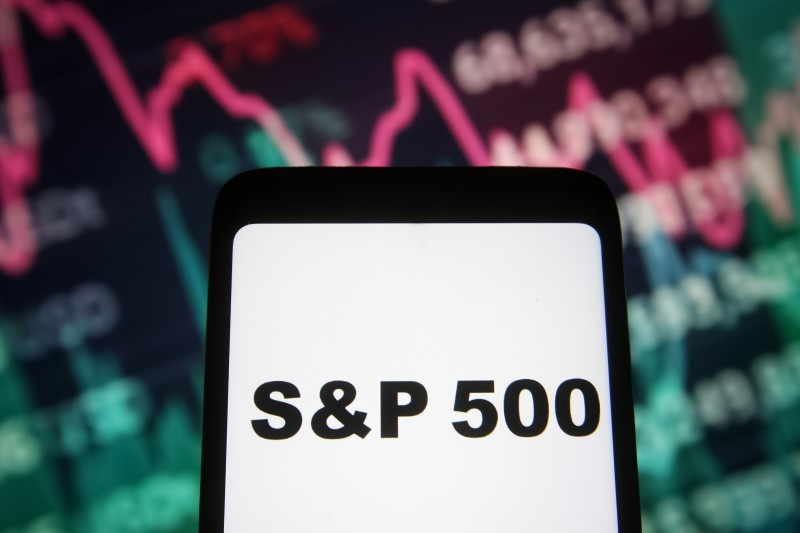
Dow Jones, Nasdaq, S&P 500 weekly preview: Spotlight on GDP, PCE data and earnings
The S&P 500 fell by 0.71%, closing at 5,505.00. The Nasdaq Composite dropped 0.81%, ending at 17,726.94. The Dow Jones Industrial Average decreased by 377.49 points, or 0.93%, to 40,287.53.
Friday’s declines were widespread, with the Russell 2000 also down by 0.63%. Despite this, the focus on stocks expected to benefit more from potential Federal Reserve interest rate cuts, such as small caps, remained prominent throughout the week.
The S&P 500 and Nasdaq experienced their largest weekly losses since April, falling by 1.97% and 3.65%, respectively. The tech-heavy Nasdaq also ended a six-week winning streak. On the other hand, the Dow gained 0.72%, and the small-cap index Russell 2000 rose by 1.68%.
The upcoming week promises to be eventful, with several key economic indicators set to be released. The main focus will likely be on the preliminary gross domestic product (GDP) data for the second quarter, scheduled for Thursday, with many economists expecting an uptick.
Furthermore, the Personal Consumption Expenditures (PCE) data, one of the Fed’s preferred inflation gauges, will be released on Friday.
“We expect a modest acceleration from the 1.5% growth pace in 1Q to 2.0% last quarter,” JPMorgan economists said in a note.
“Friday’s June core PCE inflation report is expected to show a 0.2%m/m increase in prices last month, leaving the year-ago increase unchanged at 2.6%,” they added.
Apart from this, investors will closely monitor the presidential election, especially following Joe Biden's withdrawal from the race. His decision opens the possibility of an open convention, although the consensus is that U.S. Vice President Kamala Harris is the frontrunner for the nomination.
Alphabet (NASDAQ:GOOGL) and Tesla (NASDAQ:TSLA) to report earnings this weekAs earnings season begins, the tech-focused S&P 500 faces challenges not only from the rotation into small caps but also from potential selling pressure from trend followers.
This week, several big S&P 500 companies are set to unveil their latest quarterly performance, and with the current high expectations, any misses could prompt trend followers to sell off their stretched long positions accumulated over the past two months, and weigh further on the benchmark index.
Tech giants including Alphabet and Tesla will both report on Tuesday, and will likely capture the majority of the spotlight. In addition, Visa (NYSE:V), Chipotle (NYSE:CMG), Coca-Cola (NYSE:KO), 3M, and chipmaker Texas Instruments (NASDAQ:TXN) will also report earnings in the coming days.
What analysts are saying about US stocksJPMorgan: “Mag-7 EPS growth projections remain punchy, but are set to decelerate somewhat. SPX ex Mag-7 earnings are projected to be positive at +5% y/y, for the first time in 5 quarters. However, we note that the convergence in the earnings delivery was the expectation in each of the last 5 reporting seasons, but the end result was always a bigger positive surprise for Mag-7 than for the rest of the market.This could be the case in the current reporting season, yet again. Within Tech, we reiterate the call from last month to move away from hardware/semis, and into software, on lower yields, on geopolitical uncertainty and given strong past outperformance of Semis.
UBS: “Our base case that the S&P 500 ends the year around 5,900, modestly higher than the current 5,505, would hold in most political scenarios— barring a Democratic sweep of power that leads to higher corporate taxes, or a scenario in which former President Trump imposes trade tariffs that are as high as proposed in his campaign speeches. We consider either outcome unlikely at present. In addition, we believe the positive outlook for top US tech companies is likely to more than offset political uncertainty.”
Lynx Equity Strategies: “We think the sell-off from last week is likely to reverse somewhat this week. The SOX (vs. SPX outperformance) has cut below a reliable level. The fate of the sector will of course be decided by the earnings reports, the bulk of which arrive only next week.”
“Triggering FDPR is a major change in US trade policy towards naons allied with the US. We think it is unlikely the Biden administration makes major changes to trade policy through the remaining poron of its tenure. As such we think investor fears of draconian changes to US policy towards China exports by US and non-US based companies is likely to ebb. We would be buyers of semis/semicap names.”
All comments
Comment not found



